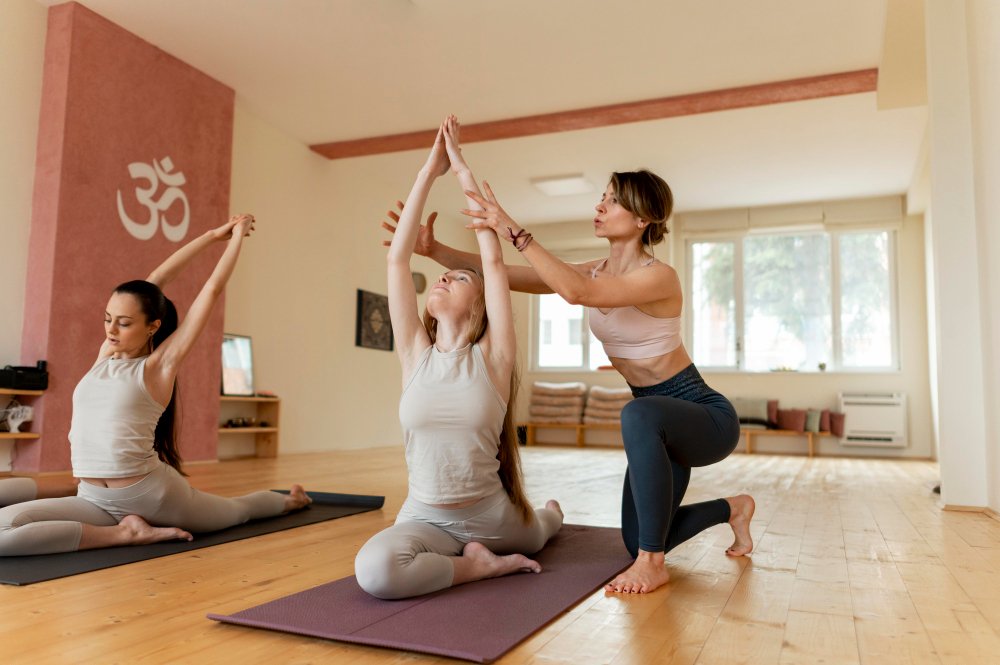Many times when we either join a new company, a new department, or a new yoga class, there are a few things that take time for us to understand. And it is completely normal to feel foreign in any new environment, whether it comes to feeling foreign about the language, working, or any term they use.
So when you begin a new yoga session, have you ever walked into a yoga class and felt like you needed a translator? The instructor begins talking about pranayama, chakras, and asanas, while you are just trying to figure out what direction your left leg is supposed to go.
Don’t worry. You are not the only one. The world of yoga, deep-rooted in ancient Sanskrit, might feel a little overwhelming at first. But do not let that deter you from enjoying the many benefits this practice has to offer. Understanding these terms is like getting a key to a secret garden—it unlocks a deeper and more meaningful experience, both on the mat and off.
We are going to refer to this as your completely non-judgmental, no-pressure guide. We will take a closer glance at the most common yoga terms that you will hear in your class so that you can spend less time worrying about vocabulary and more time focusing on the breath.
So let’s begin by knowing what all these terms actually mean.
The Big Three: Core Concepts Every Yogi Should Know
We’re going to begin with the words found in almost every class.
- Asana: You’re going to hear this word all the time. An asana is just a physical pose or posture. When your teacher tells you to “move into your next asana,” they are simply telling you to move into your next pose. The word asana literally means “seat” and originally referred to the seated poses we use for meditation. It has since come to refer to the entire physical practice.
- Pranayama: This word is all about breath. Pranayama refers to breathing exercises and techniques that are used to control and regulate the breath. The word asana itself is made up of two parts: prana (life force or breath) and yama (control). In our yoga class, when we do Ujjayi breathing (“ocean breath“) or alternate nostril breathing, we are doing pranayama. Pranayama is an incredibly powerful tool to calm the mind and energize the body.
- Namaste: You have likely heard this during the beginning or end of a class, usually while bowing. Namaste is a lovely Sanskrit greeting that means, “The divine light within me bows to the divine light within you.” We use namaste as a show of respect and gratitude from one individual to another, as a reminder of our intertwined existence.
Poses and Their Sanskrit Names (The ones you hear most often!)
Your teacher might mix English and Sanskrit when calling out poses. We will give you a few of the more common poses (in Sanskrit) to make you feel more comfortable.
- Tadasana (Mountain Pose): This will be the first pose in many sequences. It is a basic standing pose. In Mountain pose you will stand tall with your feet together using your entire body. Tada means “mountain.”
- Adho Mukha Svanasana (Downward Facing Dog): Downward dog! Adho means “downward,” mukha means “face,” and svana means “dog.” Downward-facing dog is a great all-around pose that stretches the hamstrings and shoulders while also building strength.
- Virabhadrasana (Warrior Pose): We are sure you will do all three versions, Warrior I, II, and III. Virabhadrasana refers to a strong warrior from Indian mythology. Warrior poses are all about strength, stability, and focus.
- Balasana (Child’s Pose): A true homecoming! Bala means “child.” This resting pose is a simple forward fold where you kneel and put your forehead on the mat. It is a great place to come back to your breath and rest whenever you have a moment.
Other Key Terms That Pop Up in Class
- Chakras: Think of seven spinning wheels of energy along the spine. From the very bottom of your tailbone to the top of your head, you have chakras. Each is associated with different physical and emotional states. In yoga, we often put effort into balancing where the energy is in your chakras.
- Mantra: A sound, word, or phrase that is repeated to focus thoughts during meditation. The most popular mantra (probably) is “Om” or “Aum,” which is the sound of the universe.
- Drishti: Your gaze or focal point. When you hear your teacher put and say “find your drishti,” you are being prompted to focus your eyes on a single non-moving point. This is a great way to help with balance and concentration, and it keeps your mind from wandering off to other thoughts.
- Bandhas: Think of them as “energy locks” or muscular contractions. The most common example you might hear of is Uddiyana Bandha, the abdominal lock. Using your bandhas will provide support to your core stability and help direct energy through your body.
The Takeaway
It is not about learning a new language; it is about engaging more deeply with your practice. When you are clear about what your instructor is trying to express, your body can move with more clarity and presence. It might be possible that you find a few terms that are not listed here but can be used by your instructor, so do not hesitate to ask up front and clear your doubt.
So next time you are in a class and hear a word you don’t recognize, don’t panic. Remember, every informed yogi was where you are now at some point in their journey. Yoga is a beautiful journey; there is something new to learn every time you step foot on your mat.
If your intent is to go deeper into yoga and learn from experienced instructors who understand how to communicate the practice so that it is accessible to everyone, come and check out Maa Shakti Yog Bali. They provide a thoughtful and all-inclusive space for all levels, being explicit in every term, pose, or breath.









